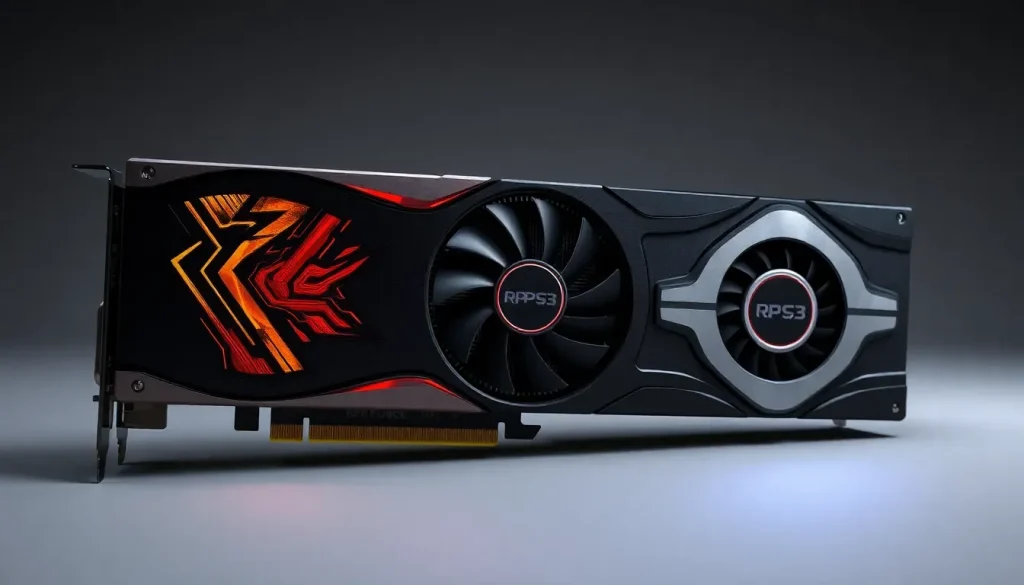RPCS3 Updates Recommended GPU Requirements Excluding AMD RX 400/500 and NVIDIA GTX 900/1000 Series

The gaming community is continuously evolving, especially with the rise of emulation technology. One of the most significant developments in this realm is the RPCS3 emulator for PlayStation 3 games. Recent updates have led to a shift in recommended GPU requirements, marking a crucial moment for gamers who want to enjoy PS3 titles on their PCs. Understanding these changes is vital for ensuring an optimal gaming experience.
RPCS3 updates its GPU recommendations for optimal performance
RPCS3, the renowned PlayStation 3 emulator, has recently revised its GPU recommendation list to reflect the current state of hardware technology. This update comes as a result of major graphics card manufacturers, such as AMD and NVIDIA, discontinuing support for several older GPU models. The emulator now recommends at least an AMD Radeon RX 5000 series or NVIDIA GeForce RTX 2000 series graphics card for an enhanced gaming experience.
The shift signifies the removal of older models from the recommended list, specifically the AMD RX 400 and RX 500 series, as well as NVIDIA's GTX 900 and GTX 1000 series. While this might sound alarming, it's essential to note that this change does not mean these GPUs are suddenly obsolete for RPCS3. Users can still utilize them without experiencing significant performance issues.
As per the latest announcement from RPCS3 via social media, the transition to newer GPU requirements aligns with the manufacturers’ ongoing withdrawal of support for older models. Nonetheless, the emulator's minimum requirements remain unchanged, still accommodating NVIDIA's Fermi GPUs, or GTX 400 series. RPCS3 has reiterated that there has been no significant change in the code that would make the emulator more demanding than before.
Can you run RPCS3 without a dedicated graphics card?
Many users may wonder whether a dedicated graphics card is necessary to run RPCS3 efficiently, especially given the diverse range of computer systems available today. The answer largely depends on the specific use case and the types of games being emulated.
While RPCS3 is primarily designed to operate with a dedicated GPU, users with integrated graphics can still use the emulator. However, performance may vary significantly. Here are some factors to consider:
- Game Complexity: More demanding titles may require a dedicated GPU for smooth gameplay.
- Resolution Settings: Running games at higher resolutions without a dedicated GPU can lead to lag and stuttering.
- CPU Performance: RPCS3 is notably CPU-intensive; hence, a powerful CPU can offset some GPU limitations.
Despite previous assertions, RPCS3 has not officially included Intel GPUs in their support list. However, reports indicate the emulator runs with Intel’s Arc A and B series GPUs, though users have experienced varying degrees of success with these configurations.
Understanding the CPU and GPU demands of RPCS3
For gamers looking to optimize their experience with RPCS3, it is crucial to understand the balance between CPU and GPU requirements. The emulator is more CPU-intensive than GPU-dependent, which means that a powerful processor can significantly improve performance.
Here are some important points regarding CPU and GPU usage in RPCS3:
- CPU Load: The emulator relies heavily on the CPU for decoding and processing game data.
- GPU Role: While a good GPU enhances graphical fidelity, it’s not the primary bottleneck in most cases.
- Vulkan API: RPCS3 recommends the use of Vulkan 1.2 for optimal performance, which can efficiently utilize both CPU and GPU resources.
Ultimately, a balanced system with a modern CPU and a capable GPU will yield the best results when using RPCS3.
Why older GPU series are no longer recommended
The removal of the AMD RX 400/500 and NVIDIA GTX 900/1000 series from RPCS3's recommended list is not an arbitrary decision. This change comes as both AMD and NVIDIA have ceased support for these older generations. As of late 2023, AMD officially announced the end of support for its Polaris GPUs, while NVIDIA followed suit by discontinuing driver updates for its Maxwell and Pascal architectures.
These evolutions in manufacturer support typically signal to software developers that it may be time to phase out older models from their recommendations. Here’s a brief overview of the implications:
- Driver Support: Without updated drivers, older GPUs may struggle with compatibility and performance issues.
- Performance Optimization: Emulators like RPCS3 benefit from the latest advancements in graphics technology, which older models cannot support.
- Future-Proofing: Upgrading ensures that users can take advantage of new features and enhancements in upcoming emulator updates.
As a result, while the emulator continues to function with these older GPUs, users may not experience the full benefits of newer developments in RPCS3.
The importance of modern hardware for emulation
As emulation technology continues to progress, modern hardware becomes increasingly essential for delivering the highest-quality gaming experiences. Gamers looking to enjoy PS3 titles through RPCS3 should consider investing in updated hardware for the following reasons:
- Enhanced Visuals: Newer GPUs offer better rendering capabilities and overall visual quality.
- Smoother Playability: Modern hardware can handle more demanding games with less lag and stuttering.
- Compatibility: Newer systems are more likely to be compatible with the latest versions of emulators and drivers.
In conclusion, while older graphics cards can still run RPCS3, users may find that upgrading their hardware greatly enhances their gaming experience, making it worthwhile to consider modern alternatives.
For more information about RPCS3 and its capabilities, visit the official RPCS3 website.




Leave a Reply